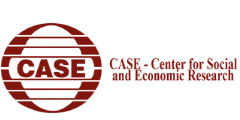- Details
These quarterly reports provide an analysis of economic trends, as well as denoting the challenges and opportunities (in local, regional, and global contexts) in the selected value chains within six sectors to improve evidence-based decision-making by providing quality information and analytics. These specific sectors are tourism, creative industries, light manufacturing, shared intellectual services, waste management, and recycling, along with cross-cutting sectors. The analysis tracks trends from 2014 to the third quarter of 2020.
These reports aim to provide Enterprise Georgia, various government ministries and agencies, private sector institutions, Business Service Organizations (BSOs), and the Program with an analytical assessment of data and economic trends on a quarterly basis. Specifically, the quarterly reports will serve to improve evidence-based decision-making by providing consolidated industry-level qualitative and quantitative data and analysis to relevant public bodies. The use of quality information is vital for making decisions that guide the identification of needs and formulation of better policies, monitoring existing policies and programs, and evaluating the effectiveness of policy decisions.
- Details
This report highlights the derivation of sector-specific output (revenue), employment, and investment multipliers based on the Input-Output framework for the Georgian economy, which portrays the potential spillover effects of an increase in final demand for the products of a given sector on the whole economy. The resulting multipliers capture the total impact on the economy consisting of initial, direct, indirect, and induced effects on the economic variables of interest, respectively, as a result of an exogenous shock to one of the components of final demand (e.g. household or government consumption, export).
At the heart of the analysis is the Input-Output Table (IOT), containing information on inter-sectoral dependencies, as well as existing relationships between sectors, final users (e.g. households, government, etc.), and economic production factors. Measured over a specific period (typically one year), an IOT presents inter-sectoral transactions that are generally recorded in monetary terms. Therefore, sectors are connected by the amount they require each other’s production as an input.












